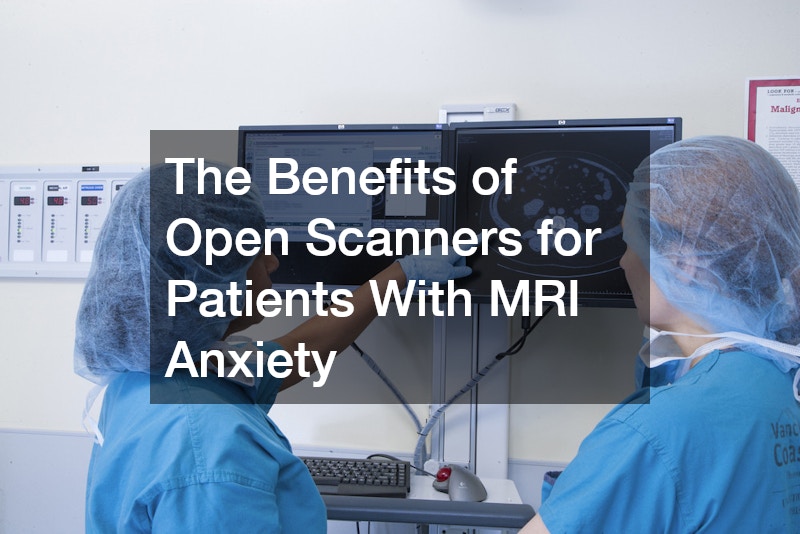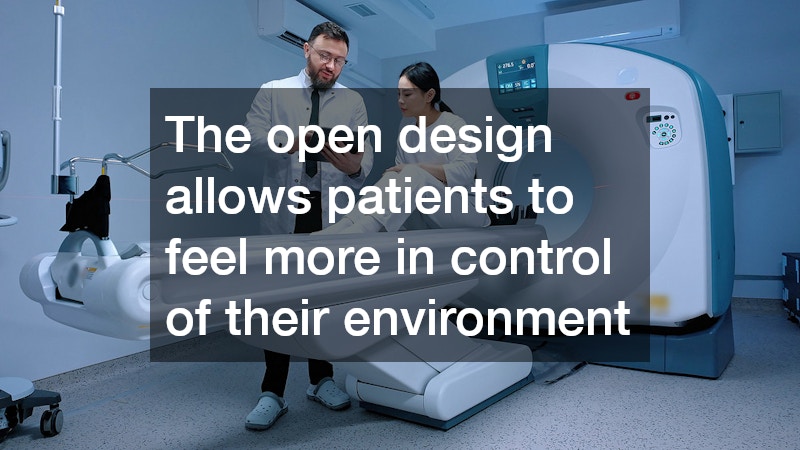
Disclaimer: This website provides health information for educational purposes only and is not a substitute for professional medical advice, diagnosis, or treatment. Always seek the guidance of a qualified healthcare provider with any questions you may have.
MRI anxiety is a prevalent concern among patients who must undergo magnetic resonance imaging. This form of anxiety can stem from fear of enclosed spaces, concerns about the noise produced by the MRI machine, or uncertainty about the procedure itself. Open scanners, which offer a less claustrophobic experience, have emerged as a potential solution for addressing these anxieties.
Unlike traditional and conventional MRI machines, open scanners allow patients to feel less confined and more comfortable during the imaging process. This inherent benefit can significantly influence a patient’s experience and cooperation.
Understanding how open scanners work and their advantages can help alleviate the apprehension that many patients face.
The importance of addressing MRI anxiety cannot be overstated. Not only does anxiety affect the patient’s comfort during the procedure, but it can also have implications for the quality of the imaging results. Patients who are anxious may experience motion that can compromise the clarity of the images, impacting diagnostic accuracy.
MRI Anxiety and How it Affects Patients
MRI anxiety manifests in various ways, including panic attacks, increased heart rate, and feelings of dread before the procedure. These symptoms can be triggered by specific aspects of the MRI experience, such as the sound of the machine or the sensation of being enclosed in a tube-like structure. Patients may also experience anxiety based on past medical experiences or the fear of potential results.
The implications of MRI anxiety extend beyond the psychological realm. When patients are anxious, their bodies can react in ways that may complicate the imaging process. For instance, a patient who is tense or fidgety may find it challenging to remain still during the scan, leading to blurring and reduced image quality. This effect can ultimately hinder the diagnostic process.
Addressing MRI anxiety is crucial for improving patient outcomes. When healthcare providers take steps to reduce anxiety, they can foster a more positive and productive environment. This, in turn, may lead to better patient cooperation and higher-quality imaging results, benefiting both the patient and the healthcare provider.
Open Scanners versus Traditional MRI Machines
Open scanners are designed with a wider opening and a more expansive structure compared to traditional MRI machines, which often have a cylindrical design. This unique structure allows patients to lie on a padded table without being enclosed in a tube, significantly reducing feelings of confinement and claustrophobia. The larger opening and layout provide an immediate sense of space that can be comforting.
Functionally, open scanners operate in much the same way as traditional machines. However, the technology used in open MRI machines has evolved to provide high-quality images while accommodating a more varied patient population. Advances in open MRI technology mean that healthcare providers can still obtain necessary diagnostic information even in a less constrictive environment.
This accessibility makes open scanners a valuable option for diverse patient populations, particularly those suffering from anxiety or other psychological conditions that may exacerbate discomfort during MRI procedures. By offering an alternative that matches imaging needs without compromising patient comfort, open scanners are changing the way patients experience diagnostic imaging.
The Advantages of Using Open Scanners for Patients with Anxiety
One of the most significant advantages of open scanners is the enhanced comfort they provide for patients who experience anxiety. The open design allows patients to feel more in control of their environment, which can significantly reduce stress levels leading up to and during the scan. This comfort can translate to a more successful imaging process overall.
Another benefit is that open scanners often produce lower noise levels than traditional machines, which can also contribute to reduced anxiety. Many patients find the sounds associated with MRIs intimidating or unsettling, and an open scanner often mitigates this discomfort. Quieter operations might create a calmer atmosphere, allowing patients to approach the procedure with less trepidation.
The social aspect of open scanners should not be overlooked. These machines allow a caregiver or family member to accompany the patient during the scan, providing emotional support and reassurance. This presence can be invaluable for patients experiencing anxiety, as knowing that a loved one is nearby can ease stress and promote relaxation throughout the procedure.
Techniques Used Alongside Open Scanners to Reduce MRI Anxiety
One effective technique for managing MRI anxiety is the use of mindfulness and breathing exercises before and during the procedure. Patients can be encouraged to practice deep breathing or visualization techniques to help relax their minds and bodies. Such practices help divert attention from anxious thoughts and refocus their energy positively.
Another complementary technique is providing patients with the option to hear music or calming sounds during the scan. Immersive distractions like soothing music can create a more pleasant atmosphere and assist in mitigating the impact of surrounding noise. This approach significantly enhances the overall experience and fosters relaxation.
Finally, educating patients about the imaging process can empower them and alleviate misunderstandings that may fuel anxiety. Information regarding what to expect during the MRI—combined with clear communication from healthcare providers—can demystify the experience and help patients feel more at ease as they prepare for their scan.
How Healthcare Providers Support Patients with MRI Anxiety
Healthcare providers play a vital role in recognizing and addressing MRI anxiety among patients. It is crucial for providers to proactively engage with patients about their concerns and fears surrounding the procedure. Open communication fosters an environment of trust and allows patients to voice their anxieties before the imaging begins.
Additionally, providers should familiarize themselves with the advancements in open scanner technology and be equipped to explain these benefits to patients. By offering reassurances about the advantages of open scanners in terms of comfort and image quality, healthcare professionals can help allay fears and create a more inviting context for the procedure.
Moreover, providers can establish routines that incorporate anxiety-reducing practices into the imaging process. This may include offering comfort items, such as weighted blankets or anxiety-reducing fidgets, which can promote relaxation in the scanner room. When healthcare professionals take the initiative to prioritize patient comfort and mental well-being, it can significantly enhance the overall MRI experience.
Open scanners offer a transformative approach for patients dealing with MRI anxiety. By providing a more comfortable and less constricting environment, these scanners can reduce feelings of panic and improve cooperation during imaging procedures. The combination of advanced technology and supportive practices enables healthcare providers to create a more positive and effective experience for patients undergoing MRI scans.
Creating awareness and understanding around the benefits of open scanners is essential, as the experiences of those with MRI anxiety can significantly impact their overall healthcare journey. Through open communication, supportive techniques, and the use of state-of-the-art technology, patients can approach MRI examinations with greater confidence and tranquility.
Prioritizing the mental well-being of patients enhances not only their experience but also the quality of healthcare outcomes. Open scanners represent a critical component in bridging the gap between patient anxiety and diagnostic accuracy.
